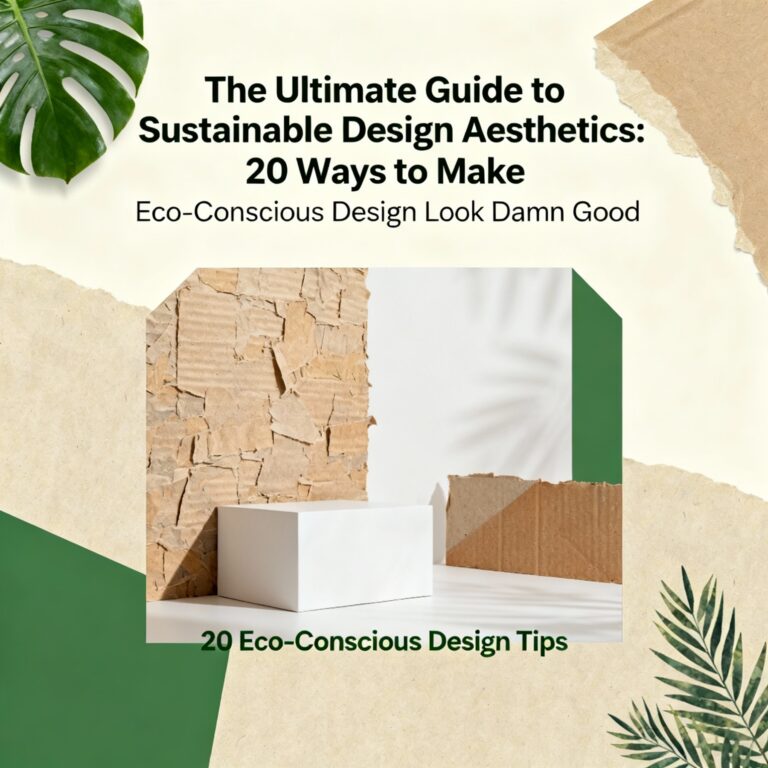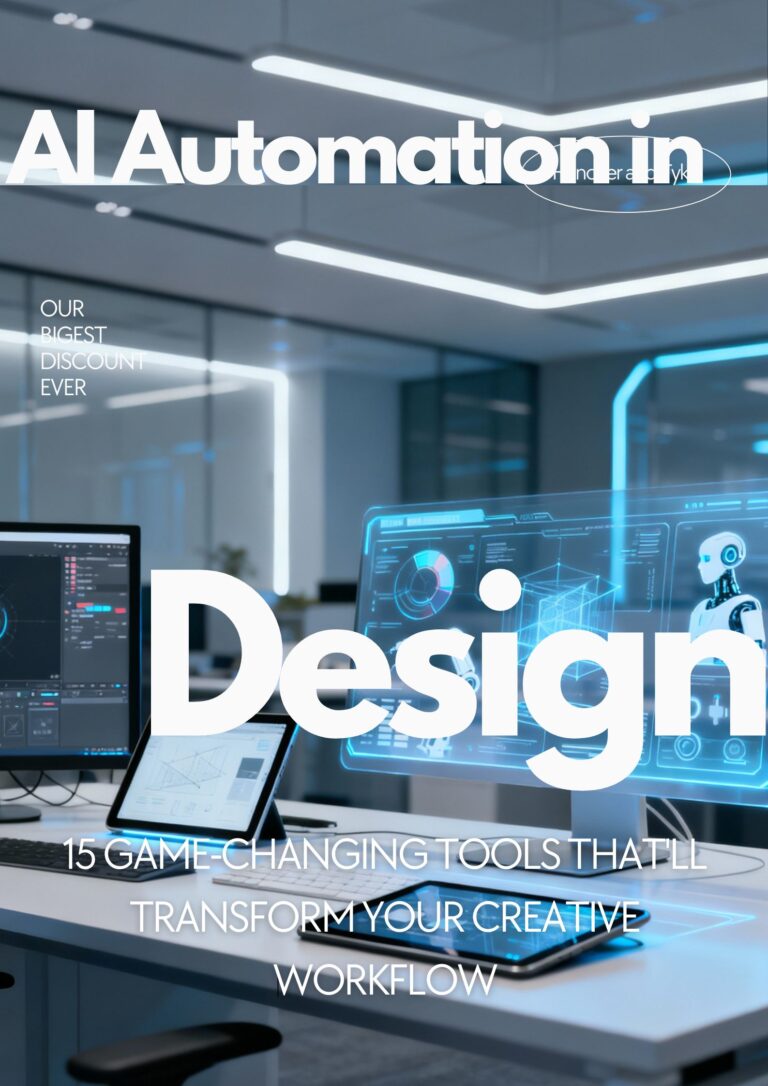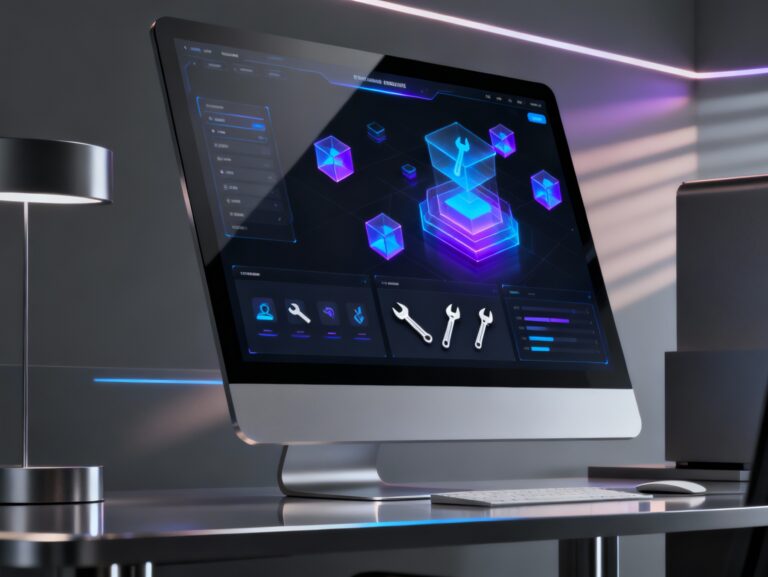
Meta Description: Discover expressive typography trends 2025, creative techniques, and bold design strategies that’ll make your brand unforgettable. Master the art of emotional storytelling through type.
Picture this: You’re scrolling through your Instagram feed, thumb on autopilot, when suddenly—BAM!—a piece of typography stops you dead in your tracks. The letters seem to dance, whisper secrets, or scream with unbridled passion. That, my friend, is the magic of expressive typography at work.
I’ve been designing for over a decade, and I can tell you that nothing—and I mean nothing—transforms a bland design into something unforgettable quite like typography that has personality. It’s the difference between a wallflower and the life of the party.
In 2025, we’re witnessing a typographic revolution. Designers are throwing the old « keep it simple » rulebook out the window and embracing maximalist, kinetic, and downright rebellious letterforms. But here’s the thing—this isn’t just about making things look cool (though they absolutely do). It’s about creating emotional connections that make your audience feel something.
So grab your coffee, settle in, and let’s dive into the 12 most powerful ways expressive typography is reshaping design this year.
1. What Makes Typography « Expressive » (And Why Traditional Rules Are Dead)
Let’s start with the basics, shall we? Expressive typography is essentially type design that prioritizes emotional impact and personality over strict readability conventions. Think of it as the difference between a corporate handshake and a warm hug from your best friend.
Traditional typography follows predictable patterns—clean, neutral, invisible. It whispers politely in the background. Expressive typography? It grabs a megaphone and demands attention.
Here’s what sets expressive typography apart:
- Emotional resonance: Each letterform conveys mood and personality
- Visual storytelling: The type itself becomes part of the narrative
- Brand differentiation: Creates instant recognition and memorability
- Cultural relevance: Reflects contemporary design movements and social trends
I remember working on a craft brewery project where we ditched the expected serif fonts for hand-drawn, imperfect letterforms that looked like they were sketched on a napkin after a few too many IPAs. The client was terrified—until sales jumped 40% in the first quarter. That’s the power of type that connects emotionally.
Insert image of [before/after comparison showing traditional vs expressive typography for brewery branding] here
2. Display Fonts: The Superstars of Expressive Design
If expressive typography were a rock band, display fonts would be the lead singer—bold, attention-grabbing, and impossible to ignore. These typefaces are designed specifically for headlines, logos, and short bursts of text where maximum impact is the goal.
The beauty of display fonts lies in their specialization. Unlike workhorse fonts that need to perform well at any size, display fonts can afford to be dramatic, quirky, or downright eccentric. They’re the peacocks of the typography world.
What Makes Display Fonts Special:
- Optimized for large sizes: Details that shine at 48pt and above
- Personality-packed: Each character tells a story
- Context-specific: Designed for specific moods or industries
- Versatility in expression: From playful to sophisticated to rebellious
Some of my favorite display font discoveries this year include variable fonts that morph from elegant to chaotic with a simple slider adjustment. It’s like having an entire font family condensed into a single, shape-shifting typeface.
Top Display Font Categories for 2025:
- Maximalist serifs with exaggerated flourishes
- Geometric sans-serifs with unexpected quirks
- Hand-lettered styles that feel authentically human
- Retro-futuristic designs blending nostalgia with innovation
3. Kinetic Typography: When Letters Come Alive
Remember those old movie credits that just sat there, static and boring? Yeah, those days are over. Kinetic typography has exploded in 2025, transforming static text into dynamic, moving experiences that captivate audiences across digital platforms.
Kinetic typography isn’t just about making letters bounce around for the sake of it (though that can be fun too). It’s about using motion to enhance meaning, guide attention, and create emotional rhythms that sync with your content’s heartbeat.
Why Kinetic Typography is Taking Over:
- Social media dominance: Perfect for Instagram Stories, TikTok, and video content
- Attention economy: Moving elements naturally draw the eye
- Storytelling enhancement: Motion can emphasize narrative beats
- Brand differentiation: Creates memorable, shareable moments
I recently worked on a campaign for a sustainable fashion brand where we animated their logo to « grow » like a plant—letters sprouting from the baseline and blooming with organic movement. The animation perfectly captured their brand ethos while creating an instantly recognizable signature move.
Technical Tools for Kinetic Typography:
- After Effects: Industry standard for complex animations
- Figma: Increasingly powerful for web-based motion
- CSS animations: For lightweight web implementations
- Lottie files: For scalable, interactive animations
Insert image of [screenshot showing kinetic typography animation frames or timeline] here
4. The Psychology Behind Emotional Typography
Here’s where things get really interesting. Emotional typography isn’t just about aesthetics—it’s rooted in psychological principles that tap into how our brains process visual information and associate it with feelings.
Different typeface characteristics trigger specific emotional responses. Rounded letters feel friendly and approachable. Sharp, angular forms suggest precision or aggression. Script fonts evoke elegance or intimacy. It’s like having a direct line to your audience’s subconscious.
The Science of Typographic Emotion:
| Typeface Characteristic | Emotional Association | Best Use Cases |
|---|---|---|
| Rounded letterforms | Friendly, approachable, playful | Children’s brands, social apps |
| Sharp angles | Modern, precise, powerful | Tech companies, luxury brands |
| Hand-drawn elements | Authentic, personal, crafted | Artisanal products, indie brands |
| Exaggerated serifs | Traditional, authoritative, elegant | Financial services, high-end retail |
| Condensed widths | Urgent, modern, efficient | News media, fashion |
Understanding these psychological triggers allows you to make intentional choices that align your typography with your brand’s emotional goals. It’s not just about what looks good—it’s about what feels right.
5. Variable Fonts: The Shape-Shifters of 2025
Variable fonts are probably the most technically exciting development in typography right now. Imagine having hundreds of font weights, widths, and styles packed into a single file that can morph smoothly between any variation. It’s like having a Swiss Army knife for typography.
What makes variable fonts perfect for expressive design is their ability to create dynamic, responsive typography that adapts to content, screen size, or even user interaction. You can literally watch letters transform in real-time as you adjust parameters.
Variable Font Advantages:
- File efficiency: One font file replaces dozens of static styles
- Design flexibility: Infinite variations between defined axes
- Performance benefits: Faster loading times for web applications
- Interactive possibilities: Typography that responds to user input
I’ve been experimenting with a variable font that has a « personality » axis—slide it one way and the letters become more playful and bouncy, slide it the other way and they become serious and corporate. It’s like having a mood ring for your typography.
Popular Variable Font Axes:
- Weight: Light to Black
- Width: Condensed to Extended
- Optical Size: Caption to Display
- Custom axes: Personality, Texture, Motion, etc.
6. Handcrafted Typography: The Human Touch in a Digital World
In our increasingly digital world, handcrafted typography has become a rebellion against perfection. These fonts celebrate imperfection, embracing the slight inconsistencies and organic variations that make hand-lettering feel authentically human.
There’s something deeply satisfying about letterforms that feel touched by human hands. They remind us that behind every design is a person with thoughts, feelings, and a slightly shaky morning coffee hand.
The Appeal of Handcrafted Type:
- Authenticity: Feels genuine in an age of digital perfection
- Uniqueness: No two letters are exactly alike
- Personality: Reflects the creator’s individual style
- Versatility: Works across vintage and contemporary aesthetics
The craft movement has influenced everything from coffee shops to tech startups. I’ve noticed that even the most buttoned-up corporate clients are asking for « something that feels more human » in their typography choices.
Insert image of [comparison showing digital font vs handcrafted font with visible imperfections] here
7. Maximalist Typography: More is More
Forget minimalism—2025 is the year of maximalist typography. We’re talking about letterforms loaded with textures, patterns, colors, and effects that would have made 2010’s designers faint. But here’s the thing: when done right, maximalist type doesn’t feel chaotic—it feels alive.
Maximalist typography works because it matches the energy of our current cultural moment. We’re living in an attention economy where being subtle means being invisible. Sometimes you need to turn the volume up to 11.
Maximalist Typography Techniques:
- Layered effects: Shadows, outlines, textures stacked for depth
- Mixed media: Combining photography, illustration, and type
- Color explosions: Gradients, rainbows, and bold contrasts
- Pattern integration: Typography that incorporates decorative elements
The key to successful maximalist typography is intentionality. Every element should serve a purpose, whether it’s reinforcing brand personality, guiding the eye, or creating emotional impact.
8. Typography in Brand Identity: Making Memorable Connections
Typography in branding has evolved far beyond choosing between serif and sans-serif. Today’s most successful brands use expressive typography as a cornerstone of their visual identity, creating instantly recognizable typographic signatures that become as valuable as their logos.
Think about brands like Netflix with their custom Graphik modifications, or Spotify’s circular letterforms that mirror their brand icon. These aren’t accidents—they’re strategic decisions that reinforce brand recognition across every touchpoint.
Building Brand Identity Through Type:
- Custom modifications: Tweaking existing fonts to create uniqueness
- Typographic systems: Hierarchies that work across all applications
- Voice and tone alignment: Type that sounds like your brand
- Cultural relevance: Typography that resonates with your audience
I’ve worked with clients who initially balked at investing in custom typography, only to see massive improvements in brand recognition and customer engagement once we implemented a distinctive typographic system.
Insert image of [case study showing brand before/after with custom typography implementation] here
9. Digital Typography Tools: Your Creative Arsenal
The tools we use to create expressive typography have exploded in both number and capability. From traditional design software to AI-powered font generators, the barrier to creating unique typographic experiences has never been lower.
Essential Typography Tools for 2025:
Professional Platforms:
- Adobe Fonts: Industry-leading library with advanced filtering
- Google Fonts: Free, web-optimized, constantly expanding
- MyFonts: Massive selection with try-before-you-buy options
Creative Marketplaces:
- Creative Market: Handcrafted fonts from independent designers
- FontFabric: Experimental and display-focused foundry
- Lost Type Co-op: Community-driven, pay-what-you-want model
Custom Font Creation:
- Fontself: Create fonts directly in Adobe Creative Suite
- Prototypo: Browser-based parametric font design
- FontStruct: Free geometric font builder
For more typography resources and design inspiration, check out www.hitchgraphics.online where I regularly share industry insights and project breakdowns.
10. Balancing Expression with Usability
Here’s the million-dollar question that keeps designers up at night: How do you create expressive typography without sacrificing readability? It’s the eternal struggle between form and function, art and communication.
The answer isn’t choosing one over the other—it’s about understanding context and making strategic decisions about where to push boundaries and where to play it safe.
The Expression-Usability Balance:
When to Go Bold:
- Headlines and display text
- Brand moments and key messaging
- Short-form content (social media, packaging)
- Emotional emphasis points
When to Stay Readable:
- Body text and long-form content
- Legal disclaimers and fine print
- Accessibility-critical information
- Multi-language applications
The best expressive typography creates a hierarchy where the most important information is also the most visually striking. It’s about choreographing the reader’s journey through your content.
11. Cultural Trends Shaping Typography
Typography trends 2025 don’t exist in a vacuum—they’re reflections of broader cultural movements, technological advances, and social changes. Understanding these connections helps you create typography that feels current and relevant.
Major Cultural Influences:
Digital Fatigue Response:
- Increased interest in analog, handmade aesthetics
- Imperfect, human-feeling letterforms
- Tactile textures and organic shapes
Global Connectivity:
- Multi-script typography systems
- Cultural fusion in letterform design
- Inclusive and accessible type choices
Environmental Consciousness:
- Sustainable design practices in font creation
- Organic, nature-inspired forms
- Efficiency in file sizes and loading
Gen Z Aesthetic Preferences:
- Bold, unapologetic self-expression
- Remix culture and typographic mashups
- Platform-specific optimizations (TikTok vertical, Instagram square)
Staying tuned to these cultural currents helps you create typography that doesn’t just look current—it feels inevitable.
Insert image of [mood board showing cultural trends reflected in typography choices] here
12. Future-Proofing Your Typography Choices
As we look toward the rest of 2025 and beyond, innovative typography techniques are emerging that will shape the next wave of design trends. The key to staying ahead isn’t just following trends—it’s understanding the underlying technologies and cultural shifts that drive them.
Emerging Typography Technologies:
AI-Assisted Font Creation:
- Machine learning algorithms that generate custom letterforms
- Intelligent font pairing suggestions
- Automated typography optimization for different contexts
Extended Reality (XR) Typography:
- 3D letterforms for spatial computing
- Typography that responds to user movement and gaze
- Immersive text experiences in virtual environments
Sustainable Typography:
- Eco-efficient font files that reduce energy consumption
- Local font loading to minimize server requests
- Longevity-focused designs that resist trend obsolescence
The most successful designers aren’t just following these trends—they’re experimenting with them, pushing boundaries, and finding new ways to combine traditional craftsmanship with cutting-edge technology.
Conclusion: Your Typography Revolution Starts Now
We’ve journeyed through the landscape of expressive typography, from the emotional psychology behind letterforms to the cutting-edge tools shaping tomorrow’s designs. But here’s what I want you to remember: the most important tool in your typography toolkit isn’t software or fonts—it’s your willingness to take risks and trust your creative instincts.
Key Takeaways:
- Expressive typography creates emotional connections that traditional type can’t match
- Balance is everything—know when to push boundaries and when to prioritize readability
- Technology is expanding our creative possibilities faster than ever
- Cultural awareness keeps your typography relevant and resonant
- The best expressive typography serves both aesthetic and functional goals
The typography revolution isn’t coming—it’s here, right now, waiting for you to grab it by the serifs and make it your own. Whether you’re designing a startup’s brand identity, creating content for social media, or crafting the next generation of digital experiences, expressive typography is your secret weapon for cutting through the noise and creating something truly memorable.
So here’s my challenge to you: pick one project this week and push your typography further than you normally would. Try that variable font you’ve been eyeing. Experiment with kinetic text in your next social post. Commission a custom lettering piece for your client’s rebrand.
Your audience is waiting for something that makes them stop scrolling, pause their podcast, or lean closer to their screen. Give them typography that doesn’t just communicate—typography that connects.
Ready to revolutionize your typography game? Start exploring the tools and techniques we’ve covered, and don’t forget to share your experiments and discoveries. The design community thrives on shared knowledge and bold experimentation.
For ongoing typography inspiration, tutorials, and industry insights, visit www.hitchgraphics.online where I regularly break down the latest trends and share behind-the-scenes looks at real client projects.
The future of design is expressive, bold, and unapologetically human. Let’s create it together, one letterform at a time.
What expressive typography trend are you most excited to try? Drop a comment below and let’s discuss how you plan to incorporate these techniques into your next project.


